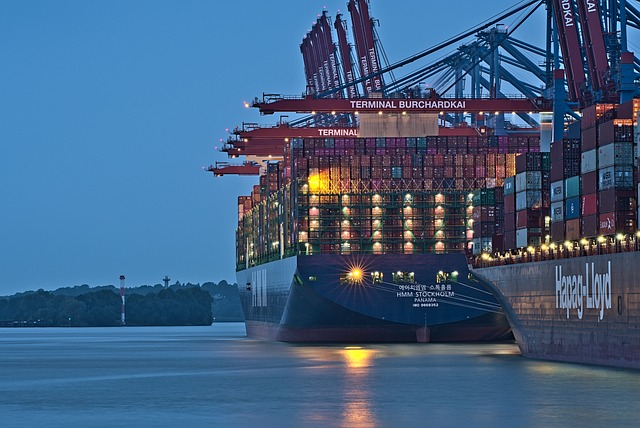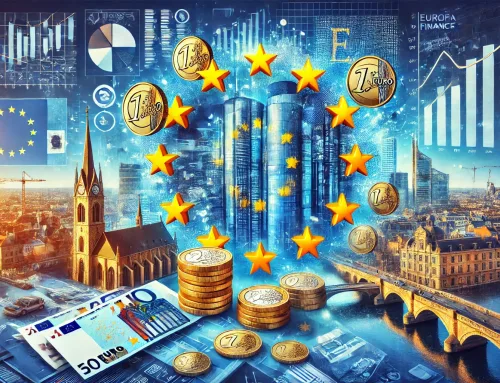April 21, 2023
Governments and the private sector need to address weaknesses in global trade and supply chains, not get rid of them, as some critics suggest.
Globalization and the international trade system have many critics these days. Some say that trade does more harm than good, is bad for the environment, lacks resilience, is not transparent, and doesn’t include enough people.
It is true that the economic and political environment, and the climate crisis, are exposing some weaknesses in the global trading system. But that should be the impetus to improve it, not abandon it. Improving global trade and supply chains means making them more resilient and inclusive, and developing them as a vehicle for a greener and more equitable future.
While the complicated and inter-twined global trading system has room for improvement and requires scrutiny, it remains the best hope for future growth, especially in developing countries. If the pandemic and current political and economic circumstances exposed weaknesses, they have also highlighted how ripe the system is for the changes that would benefit all.
What is needed is a significant review of the global trading system.
First, committed efforts to transform trade from the antiquated, paper-based system used to move goods worldwide for hundreds of years is one critically important and meaningful step that can and should be taken globally. That system, which in many countries remains in place by law, needs to become digital.
Digitalizing trade–replacing paper documents, such as bills of lading with electronic ones–would mean lower costs and make trade easier to manage, opening global trade to new entrants, including small suppliers in developing economies.
The data generated would allow for better monitoring of global supply chains so that issues such as climate change/carbon tracking and proper labor standards (safety, and the elimination of human slavery in supply chains, for example) could be facilitated, at even the smallest suppliers. Financial crime would be easier to detect.
A vital step in digitalizing trade is for countries to bring their legal systems into an alignment that does not demand multiple paper documents accompany each trade shipment. To that end, the United Nations Commission on International Trade Law has developed the Model Law on Electronic Transferable Records for countries to adopt, or to which they could align their current legal systems.
Second, we need to ‘green’ trade. McKinsey estimates that more than 80% of greenhouse gas emissions and 90% of the adverse impact on air, land, water, biodiversity, and geological resources are connected to trade and supply chains.
It is imperative that we see deep into these networks to track, report and address carbon in supply chains. Barcode and QR code technology can help align climate and sustainability standards, as well as collect and transmit data about such standards.
The time is ripe for governments and the private sector to address weaknesses in global trade and supply chains.
The International Financial Reporting Standard (IFRS) is integrating climate reporting into company financial reporting across 176 jurisdictions and GS1 – a non-profit global organization in charge of the standards that make bar-code technology possible – is in the process of templating into bar/QR codes the impending carbon reporting standard for products around the world. Together, these partners will facilitate tracking and reporting carbon emissions throughout far-reaching global supply chains. This will include addressing the complex challenge of Scope 3 emissions tracking.
If we don’t green trade and supply chains, we won’t achieve our climate goals.
Third, greater transparency in trade can also spread equitable access to finance and drive greater inclusion in the global trading system. A relatively new variation of financing called “deep-tier supply chain finance” leverages the track records and connections of big buyers to channel finance to the smallest links in supply chains. Those links are the small and medium-sized companies that provide most of the jobs in Asia’s developing countries. They are the backbone of most economies around the world.
Risks have risen, prompting financial institutions to reduce support for trade, with small businesses and emerging markets being hit hardest. Local currency values have fallen, in some cases dramatically. Together with higher interest rates, that makes servicing hard currency debt more difficult and much more expensive. The strain can be seen through dwindling foreign exchange reserves, which are also being hit by fewer remittances as overseas workers are reluctant to send money through official channels with local currency values plummeting.
High prices for fuels, food and other global commodities are straining currency reserves further, especially for countries that rely on imports. And inflation in commodities and other goods reduces the real value of what country and counterparty limits exist to support trade. Perhaps the most worrying factor is the specter of global recession, which could cut demand even further for exports produced in emerging markets.
The global trade finance funding gap has already widened to well over $2 trillion. That growing gap strangles the potential of trade to deliver human and economic development, to create jobs and boost growth.
Multilateral development banks, such as ADB, have elevated their support with more guarantees and loans to back trade, which also helps draw in more private-sector participants by attaching their strong credit ratings to deals that otherwise would not get done.
But support from multilateral institutions is at best only a tiny stopgap measure for global trade and supply chains.
Trade has lifted millions of people out of poverty and improved living standards. More than a tweak is required to address weaknesses in global trade and supply chains, both because of the current challenging economic environment, and due to challenges like climate change and a need for greater inclusion in the global economy.
The time is ripe for governments and the private sector to address weaknesses in global trade and supply chains. We have solutions, we just need to implement them. Throwing the baby out with the bathwater is not the answer.
Source: Asian Development Bank – By Steven Beck
Legal Notice: The information in this article is intended for information purposes only. It is not intended for professional information purposes specific to a person or an institution. Every institution has different requirements because of its own circumstances even though they bear a resemblance to each other. Consequently, it is your interest to consult on an expert before taking a decision based on information stated in this article and putting into practice. Neither Karen Audit nor related person or institutions are not responsible for any damages or losses that might occur in consequence of the use of the information in this article by private or formal, real or legal person and institutions.






